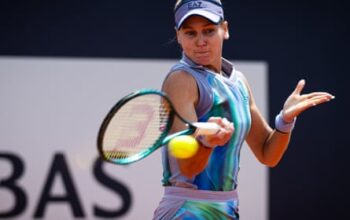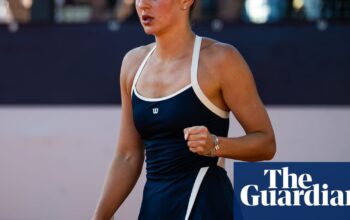As Jack Draper successfully closed out a brilliant performance against Carlos Alcaraz at Queen’s on Thursday, his instant reaction was notable. Draper nodded confidently, he scanned the crowd and then he embraced his opponent.
It was a moment – by far the biggest win of his career – but it was also important for him to take it in his stride, “not get too high” despite the big victory. This is, after all, exactly where he believes he should be: battling the best in the world as equals.
Although Draper was unable to further extend a brilliant run, losing on Friday to the world No 13, Tommy Paul, in three tight sets, things seem to be coming together. He will head to Wimbledon more prepared for a potential deep run at a major tournament than he has ever been. After claiming his first title in Stuttgart and becoming the British No 1, Draper sits at No 29 in the ATP rankings and he will certainly be seeded at a major tournament for the first time.
Draper’s path to this point has been interesting to say the least. A year ago, he was off the tour after suffering a shoulder injury at the French Open. At that point, injuries had largely defined him. While he was able to show his talent with noteworthy wins during the fleeting moments he was healthy, another physical setback was always around the corner. Since reuniting with his old fitness coach, Steve Kotze, last year it has taken significant effort for Draper to build the physical strength and fitness required to withstand the rigours of his sport.
“Having to miss out on the grass really hurt, but at the same time, I was nowhere near ready,” he said. “I was injured all over my body. I had shoulder problems, hip problems. My body was just made of glass at that point. Mentally, as well, I wouldn’t have been ready either.
“I think it was a blessing in disguise, because ever since I came back from those injuries last year since September I have been really putting in great work.”
At 22 years old, this season is Draper’s first full year on the ATP tour without injury interruptions. It has perhaps been even harder than anticipated as he has had to learn how to keep on pushing through after numerous early, tight losses. While he maintained a healthy perspective throughout a difficult clay-court season, his first-round loss at the French Open required significant contemplation. “I felt like I had a little bit of a mental block,” he said.
Having recently hired former top 10 player Wayne Ferreira, alongside his longtime coach, James Trotman, the constant theme from Draper has been trying to mould himself into a more attacking player. As a junior, he was a smaller player who won matches through his consistency and his ability to grind through opponents. It was not until a sudden growth spurt that he reached his height of 6ft 4in. Draper’s goal this year has been simple: play like the big man he is.
after newsletter promotion

In service of that goal, he has slightly adjusted his serving stance in an attempt to gain more consistency. Rather than returning from deep in the court, where he is comfortable and has been quite successful, he is trying to take returns early and take time away from the opponent. While he can be tentative with his lefty forehand in big moments, Draper’s goal is to dominate opponents with the stroke and close down the net when possible.
While Draper often looked frazzled when trying to implement those changes during the clay season, he kept with them. His success in Stuttgart and London was underscored by great serving and his determination to take control of the important points. He left Queen’s emboldened by that play.
The next challenge will be the biggest of all: taking that form and confidence to Wimbledon and rising to the immense pressure as a local seeded player in the best-of-five-sets format. Again, this is exactly the position Draper wants to be in and how he handles the occasion will be instructive as he continues his rise.


